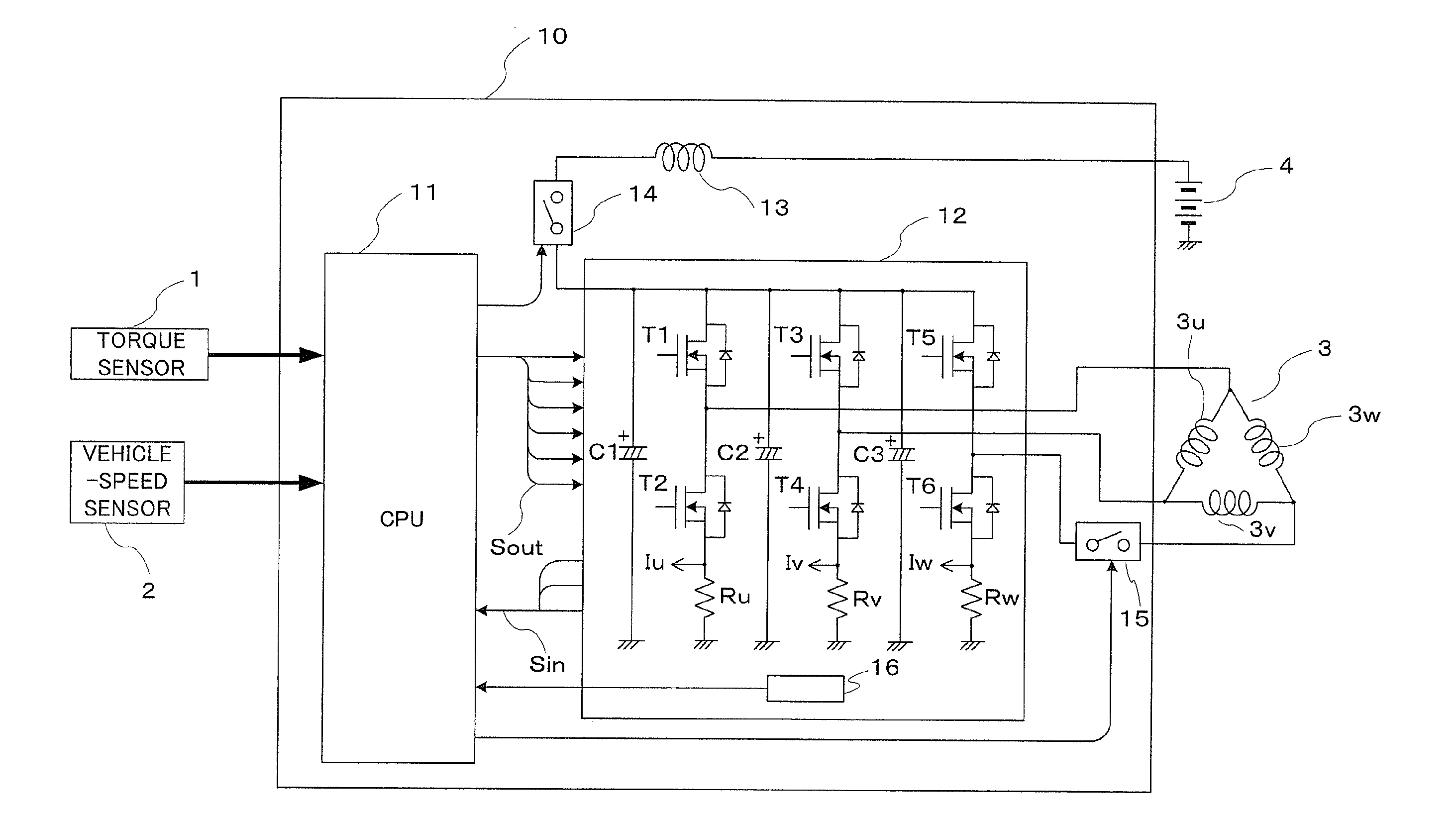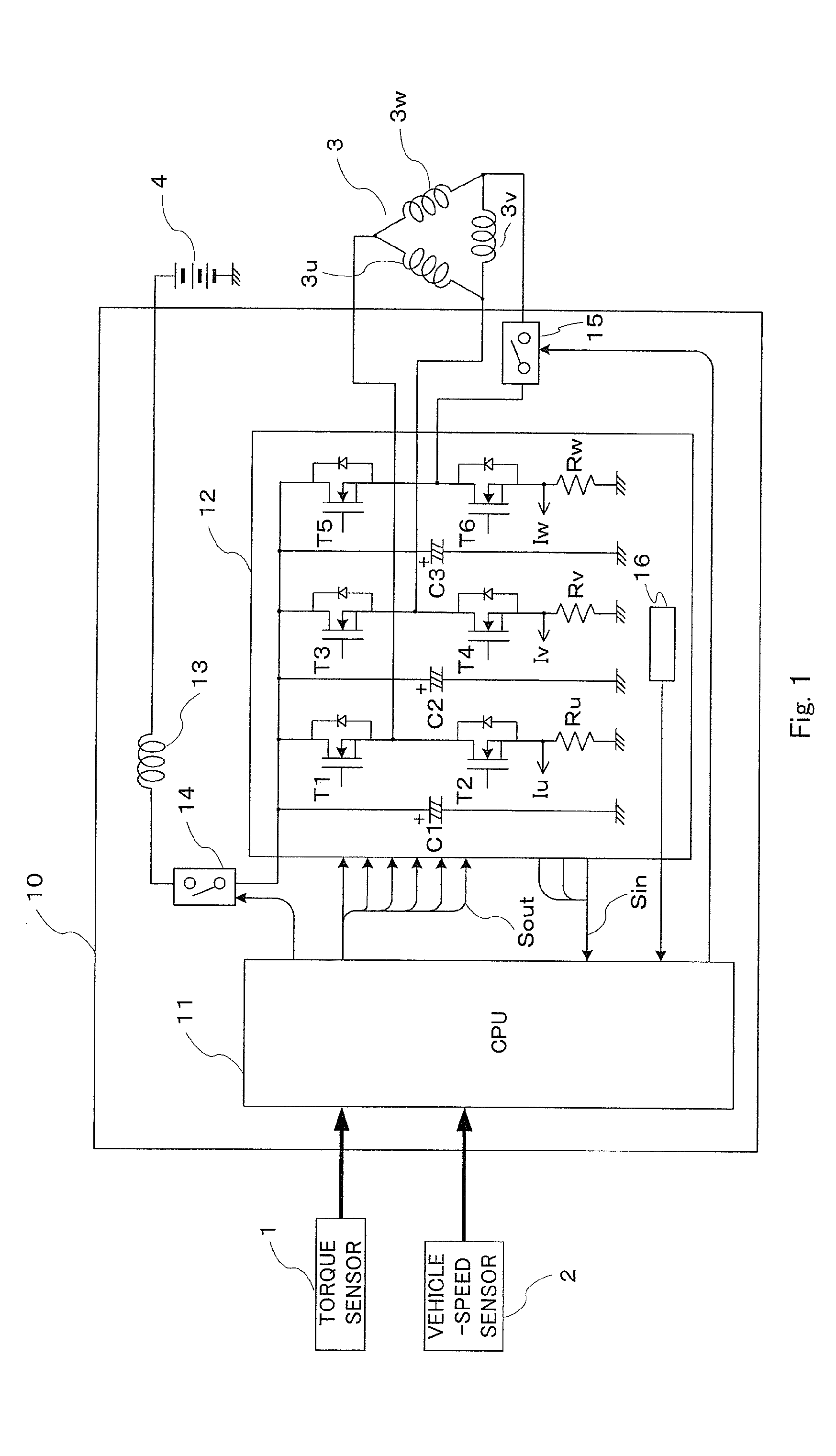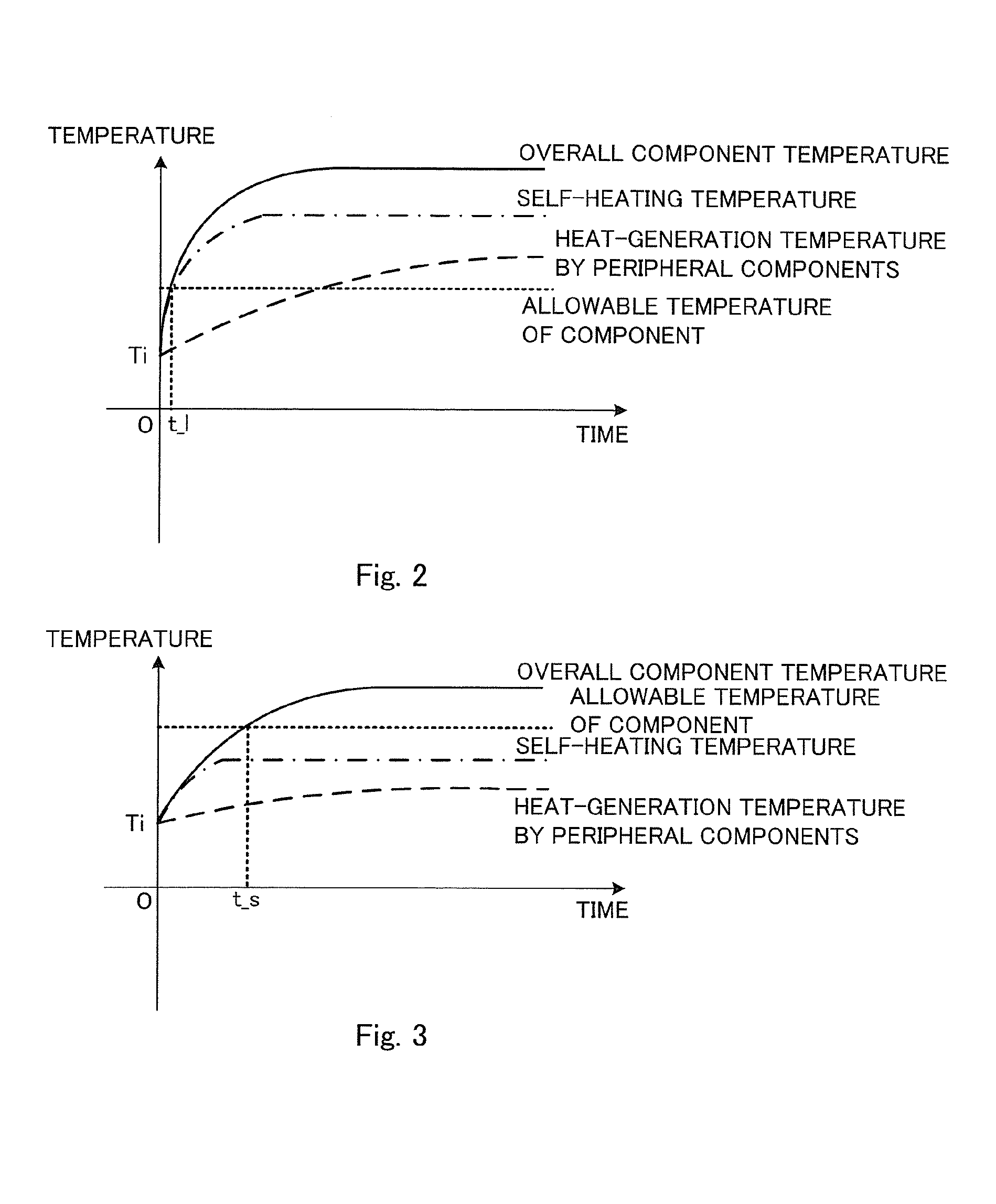Electric power steering control device and electric power steering control method
a control device and electric power steering technology, applied in the direction of electrical steering, electric motor control, transportation and packaging, etc., can solve the problems of excessive limit of motor current, and early limitation of motor current, and achieve the effect of increasing assist torqu
- Summary
- Abstract
- Description
- Claims
- Application Information
AI Technical Summary
Benefits of technology
Problems solved by technology
Method used
Image
Examples
first embodiment
[0021]FIG. 1 is an overall configuration diagram illustrating an electric power steering control device according to a first embodiment of the present invention. The electric power steering control device of the first embodiment includes a torque sensor 1, a vehicle-speed sensor 2, a motor 3, a battery 4, and a control unit 10. A three-phase brushless motor is used as the motor 3. A state in which the motor 3 includes coils 3u, 3v, and 3w is herein exemplified.
[0022]The control unit 10 includes a CPU 11, a driving section 12, a choke coil 13, a power-supply relay 14, and a motor relay 15. Further, the driving section 12 includes six switching elements T1 to T6 as represented by FETs, three noise-prevention capacitors C1, C2, and C3, and three shunt resistors Ru, Rv, and Rw for detecting a current flowing through the motor 3.
[0023]The torque sensor 1 is provided in the vicinity of a steering wheel (not shown) of a vehicle, and detects a steering torque applied by a driver. The vehicl...
second embodiment
[0085]The first embodiment has described the case where the overheat-protection characteristic (coefficient) of the component having a large amount of self-heating is calculated in consideration of both the characteristic depending on the self-heating and the characteristic depending on the ambient temperature. On the other hand, a second embodiment of the present invention describes the case where the two characteristics are treated as a single characteristic.
[0086]Referring to FIG. 4 referred to above, the following is understood. In the low-current regions (A1 to C1 and A2 to C2), the two characteristics do not have a large difference. In the high-current regions (C1 or larger and C2 or larger), the two characteristics apparently have a difference.
[0087]FIG. 5 is a graph showing an overheat-protection characteristic according to the second embodiment of the present invention. As shown in FIG. 5, when the current is smaller than the high-current region, set values (A3, B3, and C3)...
third embodiment
[0092]A third embodiment of the present invention describes the case where a single component has a plurality of characteristics in accordance with an atmospheric temperature. In the control unit 10 illustrated in FIG. 1 referred to above, the temperature sensor 16 is mounted in the vicinity of the heat-generating components (switching elements T1 to T6, for example) of the driving section 12 or the heat sink for radiating the heat of the heat-generating components.
[0093]The temperature sensor 16 may be a thermosensitive element such as a thermistor. The CPU 11 reads temperature information detected by the temperature sensor 16 to obtain a temperature in the vicinity of the location where the temperature sensor 16 is mounted.
[0094]FIG. 6 is an overheat-protection characteristic diagram according to the third embodiment of the present invention. In the characteristic diagram of FIG. 6, a characteristic 23 indicated by a solid line corresponds to a basic characteristic 23 of the corre...
PUM
 Login to View More
Login to View More Abstract
Description
Claims
Application Information
 Login to View More
Login to View More - R&D
- Intellectual Property
- Life Sciences
- Materials
- Tech Scout
- Unparalleled Data Quality
- Higher Quality Content
- 60% Fewer Hallucinations
Browse by: Latest US Patents, China's latest patents, Technical Efficacy Thesaurus, Application Domain, Technology Topic, Popular Technical Reports.
© 2025 PatSnap. All rights reserved.Legal|Privacy policy|Modern Slavery Act Transparency Statement|Sitemap|About US| Contact US: help@patsnap.com



